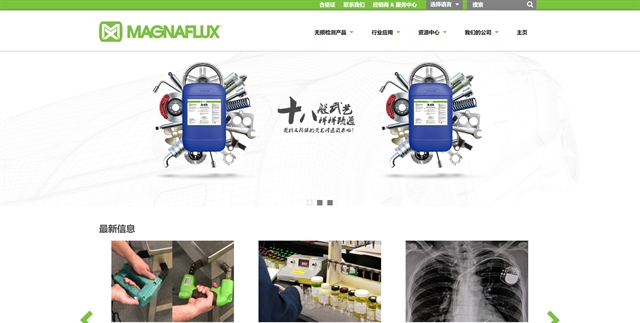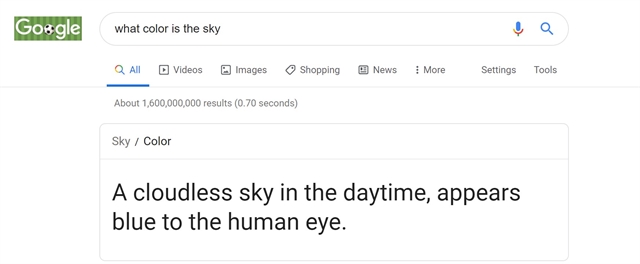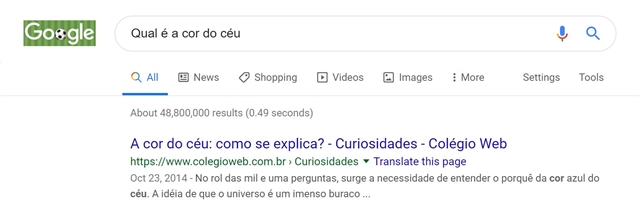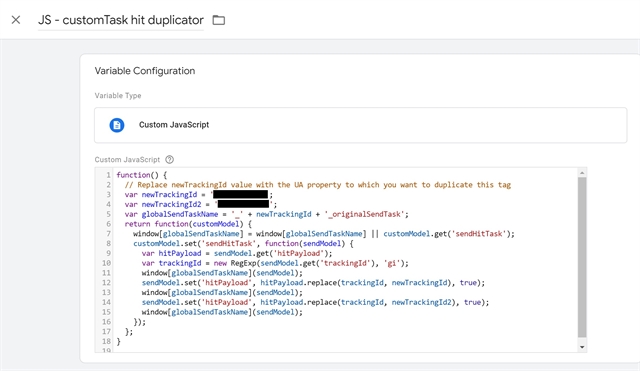International Considerations
International organizations need multilingual and/or international websites with complimenting SEO strategies. That’s a no-brainer. Actually, creating a targeted, effective international web presence is a big-brainer, often a headache-inducing one.
Your Business and Traffic
Some of my domestic-market clients want -- or think they want -- an international web presence because they assume it will make them look bigger or because they believe they’re missing out on customers outside the home country.
My advice: Don’t leap into an international web presence project out of vanity or on blind assumptions. Be realistic. Review your data. Proceed only when two conditions apply:
- You plan to expand into a new region or country.
- You already have qualified, engaged international users accessing your site and converting.
Analytics stores information about your visitors’ locations. Check out that info, but vet it. Many apparent international visitors are bots. I frequently see spam bots from India and Russia (to name two of many prominent sources) when analyzing Google Analytics traffic. Stay on top of your GA spam filters to suppress bots.
Multilingual Users
Say that foreign users rarely access your website, but many non-English speakers visit it from within your own country. Do you need an international, multi-country, multilingual website? No. A country-specific multilingual site -- targeting your home country – is enough. To target multilingual visitors within your own country, hire native speakers to translate or work with a reputable translation company with experience in your industry.
Your Team
Say you have the traffic, interest and business to support international and/or multilingual sites for your organization. Is your web team up to building and maintaining such a site?
In my experience, an international multilingual effort works best with team members on the ground in the countries or regions you’re targeting. Avoid routing all communications and marketing efforts through one central location in your home country.
This local-first structure helps with tactical tasks and ensures that your country-specific marketing messages resonate with target audiences in a given location. People who live in your target location(s) are attuned to local culture. They can deal sensitively with small tasks, such as technical vocabulary and image selection, that can easily become nuisances. They can make sure that you connect with, rather than inadvertently repel, your intended audience(s). These boots on the ground can also help maintain multiple websites and connect with users across time zones.
Site Structure
After reviewing your website data, determine the site structure that makes the most sense for your organization:
- Country-specific websites or
- One website translated into multiple languages.
Country-Specific Websites
Country-specific websites target one country and work well with marketing campaigns limited to one country. They’re ideal if your products or services vary from country to country. Their content is in the country’s primary language, and their imagery reflects and relates to that country.
Often, designers make country-specific websites that echo the company’s primary site, but with a look and feel that reflect the design trends and sensibilities of the target country. For example, the Magnaflux Chinese website uses a design similar to the primary Magnaflux North American website, but with slight adjustments to reflect Chinese design sensibilities.
Magnaflux North American Site

Magnaflux Chinese Site

URL Structure
Top-level domains fall into two categories: generic, such as .com or .org, and country-specific, such as .fr, for France. A country-specific website should indicate the target country in the TLD. For example, if you sell one line of tools only in France, use a top-level domain of .fr. It would be most effective for a website that targets French users, has content in French language, and communicates through France-centric images.
Region-Specific Websites
You can target regions of the world, such as the European Union, Asia and the Middle East. This broader, less precise approach can be the right one if your products and services vary by region rather than country.
URL Structure
Some regions of the world offer specific URLs. They function much like top-level domains; for example, to target the entire European Union, use the domain .eu.
These URL extensions clearly indicate specific regions of the world, but from an SEO perspective they are not as geo-targeted or effective as top-level domains.
To go even deeper into URL structure, check out this complete guide to the best URL structure for international SEO from our friends at IVANNOVATION.
A Note About China
If you want to target the Chinese market, your organization must meet Chinese government requirements. Anyone can purchase an official .cn domain, but you can’t actually use it as part of your website address or email address until you meet the requirements, including providing valid documentation demonstrating who you are. You must provide one of the following document types to the Chinese government:
- A Chinese resident or temporary ID, organization certificate or business license
- A business certificate, resident ID, or passport from Hong Kong, Singapore, Taiwan or Macau
- A valid form of identification, such as a driver’s license or passport from another country or region
The Chinese government will review the information you provide and let you know when your identity has been validated. (Follow this link to learn more about registering a .cn domain.)
Multilingual Websites
Say that instead of users in a certain region or country, you’re after users who speak a particular language regardless of location. For this, a multilingual site works best. For example, if you wanted to target Spanish speakers in the U.S., as opposed to Spanish-speakers in Mexico or Spain, a translated, multilingual website would be most effective.
In most cases, a multilingual website is simply a primary site, with its usual design and images, translated into another language. For example, when Flexco wanted to target Spanish speakers in the United States, the company translated its primary site into Spanish and leveraged the same design, imagery and overall look and feel as its English counterpart.
Translating Your Content
Hire human translators; do not rely on automatic translations. Although tools such as Google Translate can help in a pinch, they are not accurate enough to trust with an entire website, especially one with technical terms.
Again, the ideal translation process employs team members who are native speakers of your targeted language(s). Failing that, use a reputable translation company, such as OmniLingual.
URL Structure
You need not use a geographic top-level domain if you translate your primary website. Stick with the generic TLD -- .com or whatever -- and add a language modifier. You can do this with a subdomain or a subfolder.
For example, you can use the URL yourawesomesite.com/fr or fr.yourawesomesite.com. In both instances, the URL would target French speakers.
You can translate top-level domains. For example, the URL www.yourawesomesite.de/fr is designed to serve French speakers in Germany.
Language Targeting
In addition to using a subdomain or subfolder to indicate your language selection, it’s important to add a hreflang meta tag indicating the language you’re targeting. Also include information about available alternate languages and/or region targeting.
For example, on the Flexco website, we use an href meta tag to indicate the site’s targeted language while also including information about available languages.

Alternate language information matters, especially if you have two sites in the same language that target different locations. For example, Eriez has a UK website, in English, and a North American site, also in English. Using the appropriate language and alternate tags helps ensure that search engines serve the correct content to the correct audience in the right locations.
International SEO Considerations
As you develop multilingual and/or international websites, keep international SEO considerations in mind.
Basic SEO tactics (optimizing your content, keeping speed in mind, etc.) apply, along with some particular international considerations.
Local Hosting
Hosting your website on a local server, near or in your targeted country’s location, will improve your local SEO. Many tools, such as Cloudfare, can help you host locally.
Hosting in China
Local hosting is especially important in targeting the Chinese market. Ideally, you would host your site on a server in China or Hong Kong. This will help you surmount The Great (fire)Wall of China.
Don’t Use IP Redirects
Often, multilingual or international sites redirect users based on the location indicated by their IP addresses. For example, if your IP address indicates Australia, users will automatically be redirected to the Australian version of your website.
This is bad SEO. It usually results in poor user experience, because IP identification is not reliable and can result in redirection to incorrect sites.
IP redirects can confuse search engine crawlers. For example, the Google Bot always crawls from California. If the search engine bot is always redirected to your U.S. site, it might miss your other sites.
National and Regional Search Engines
Although Google is the most used search engine worldwide, consider national and regional search engines as part of your international SEO strategy.
China, for example, blocks Google. Chinese people have turned to Baidu, the country’s top search engine. So (that’s the name, don’t blame us) is another popular search engine in China. Baidu uses an algorithm similar to the one Google used c. 2009. For example, links to local websites still play an important role in the algorithm, as do keywords and meta descriptions.
Google search also trails in Russia, Korea and other countries. To effectively target these countries, review and adjust to the unique, local search algorithms.
Remember, too, that Google does not roll out major algorithm changes simultaneously across its global properties. Changes or feature advancements typically roll out first in the U.S. or UK.
Searching What color is the sky? on google.com in the U.S. yields an instant answer. The same query on Brazilian Google does not, because instant answers have not been rolled out worldwide.

Caption: An instant answer for the query “What color is the sky,” appears on Google.com, which primarily serves the U.S.

Caption: When the same query is conducted on Google.com.br, which serves the Brazilian market, an instant answer does not appear.
Measuring Success
If you use Google Analytics to measure and monitor website traffic, it’s important to make a unique GA property for each website. You still can look at your website traffic in aggregate with a Google Analytics roll-up, implemented with Google Tag Manager.
A roll-up sends one website’s traffic to multiple Google Analytics properties. This gives you an opportunity to review your traffic performance on a regional or global level.
To use a roll-up, create a unique Google Analytic property for each site you want to track (e.g., one for France, Germany, the U.S., etc.). Implement the code using Google Tag Manager.
Then create a property for each aggregate. For example, if you want to have all your EU sites measured in one place, create a separate EU Google Analytics property. This will not report for one single site; it will receive traffic data from all of your EU sites. Likewise, you can create one master Google Analytics property for all of your sites.
Implement the additional properties by using a custom hit duplicator variable. Below is a sample code snippet, implemented through Google Tag Manager, that serves as a roll-up for one of our international clients.

Caption: This custom hit duplicator allows data from multiple websites to be sent to one Google Analytics property, making it easier to analyze and manage your users across sites.
A few notes about using roll-ups:
- If you create goals, you must create goals on every property and every view. The goals will not roll up.
- If you are using Google Analytics to track internal search terms, the data will only roll up if your properties are on one domain. They will not roll up if your aggregate property represents multiple domains.
- Events will roll up, even if the roll-up contains multiple domains. Be sure to record the domain when setting up the events so you can adequately track conversions at each site.
Putting it All Together
Developing an international or multilingual website is ideal for organizations with a global footprint. However, developing an international or multilingual web presence is often more time consuming and complicated than expected. You won’t succeed without a strong team in place and capable of leveraging international SEO best practices.